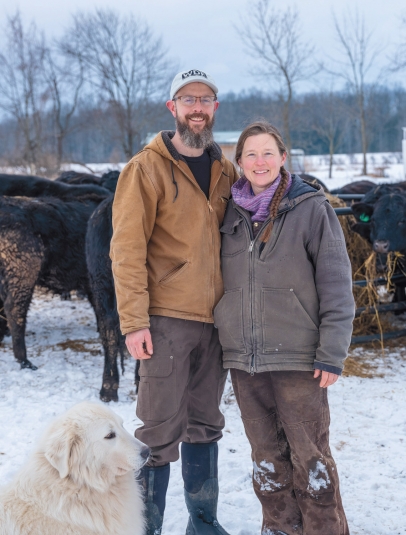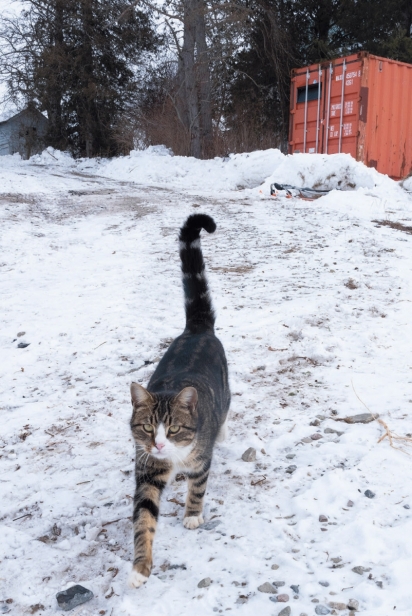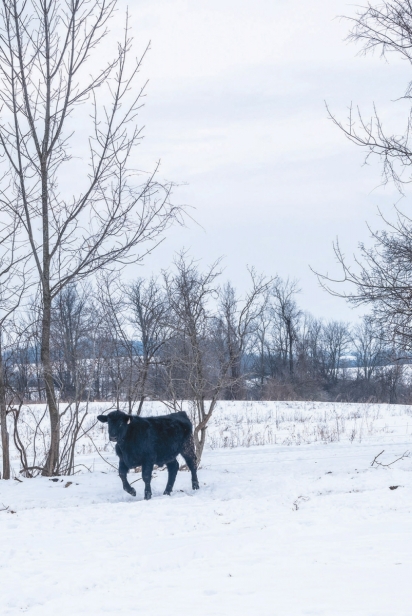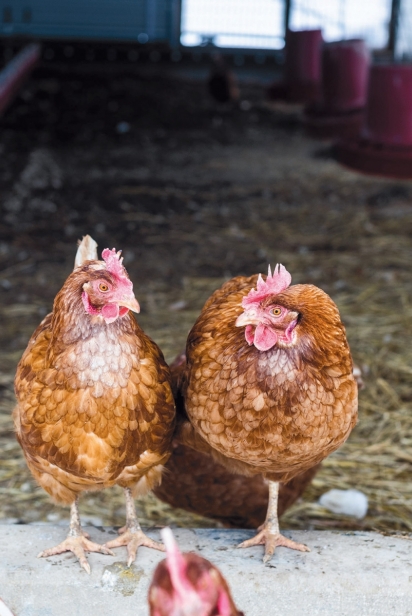The Wrong Direction was Just Right for the Perozzi’s
We’ve all been told we’re headed in the wrong direction when where we’re going feels just right. Sometimes it’s a question of a quirky internal GPS, sometimes it’s a deeper sense that your life, as it stands, isn’t quite what it should be.
Both seemed to apply to Dave and Rachel Perozzi in the early aughts. They were living in the suburbs of New Jersey, working jobs that didn’t make them want to get up every day and scream with joy, feeling utterly disconnected from the world of agriculture, separated from the world of animals and nature, divorced from the business and beauty of nurturing and nourishing the food that sustains life.
That’s when the Perozzis started heading in what the rest of the world would probably say is the wrong direction. The process was slow.
“When my eldest son AJ was born, he had serious food allergies,” Dave says. AJ is now 16, their daughter, Allie, is 15, and their youngest son, Harry, is 12. “Rachel and I started rethinking how and what we were eating. We started buying from local farmers and gardening. We tried to expand our gardening to having chickens, but we quickly learned our neighborhood was not open to that.”
Dwindling U.S. Farmland
Through much of the 20th and all of the 21st century, the places our food came from, and was grown, changed drastically.
Out went small, diversified farms across the country, in went large, mono farms in rural patches of the U.S. where less than a fourth of our population lives. According to the USDA, after reaching “peak” farm in 1932, with 6.8 million individual farms, the number plummeted. At last count in 2020, there were 2.02 million farms, down from 2.2 million in 2007. Of the 897 million acres being farmed last year, the average size was 444.
On 100 Clean Acres
“Gardening and talking to local farmers captured our imagination,” Dave says. “We started learning more and more about the food system, and we decided that we wanted to find a way to grow more of the food we ate for ourselves and others.”
The Perozzis began looking for new spaces. The suburbs of New Jersey were out—both too expensive and already overcrowded. So they ventured further afield. Dave worked with Verizon and discovered he could get a job in the Albany office. Farmland within commuting distance was affordable.
“The farm we purchased was 100 acres,” Dave says. “But if you’re picturing something out of Martha Stewart magazine, think again. We could afford it, but our budget meant it was fairly run down.”
The family moved there in 2011 and immediately got to work.
“There was a house that was built in the 1860s, and it hadn’t been lived in for decades, so there was a significant rodent population,” Dave says. “We focused on getting the house just basically up and running. We heat the house with a wood stove, and we use an outhouse. Rachel and I tell ourselves that we are doing our kids a favor, and that they’ll be tougher because of it.”
Dave, Rachel and even the three kids—instead of turning their home into a farm chic Instagram-ready photo studio—poured all of their energy into what they came here to do: farm. They wanted to create a diverse system: Animals could graze, and they could create a business based on responsibly farmed poultry, cattle and (for a time) pigs. They also installed a vast garden for family use.
“There was zero infrastructure on the farm,” Dave explains. “We installed water lines, electric fencing, we created shelters for the animals to keep them safe from predators and warm in the winter.”
The biggest logistical lift was the moving chicken palaces Dave hand-built.
“We have coyotes, foxes and bears close by, though I’ve never seen bears on the property,” he says. “Hawks, eagles and owls will also go after the chickens, and so will raccoons and skunks. We have guardian dogs that help a lot, but we needed a shelter for the chickens so we could move them around and they’d have access to new grass, fields and insects every day, but so they could be safe and protected.”
Dave found old greenhouses on Craigslist and welded them onto guard rails so they’d be portable and move from field to field. That way, the chickens can be protected, but still have access to sunshine, fresh food and air.
Rachel, meanwhile, is in charge of moving the Angus cattle—they have about 50—day-to-day. Their sons help with the chicken—they have 500 meat chickens at any one time, and Allie is in charge of their flock of 400 turkeys. They started out working with pigs, but they were trying to grow both the pig and chicken business simultaneously and realized they didn’t have the financial or human capital to do both. Now, they partner with another local farm to resell their pasture-raised pork—and that farm sells their chicken—allowing both to focus on what they love and serve their customers well.
While the sweat equity he and his family expended was significant, the lack of bare bones basics also meant there wasn’t a legacy of industrial chemicals to combat.
‘To Leave the Land Better Than We Found It’
“It has always been an essential part of our mission to treat the animals well, completely avoid anything that isn’t organic and to leave the land better than we found it,” he says, adding that they are certified organic now. In a bid to actually improve the soil, micro-climate and ecosystem, the Perozzis have planted hundreds of trees on the land.
“This year alone we’ve planted about 50, and we’re focusing now on planting trees with nuts,” he says. “We’ve planted about 40 honey locust trees, because they drop pods the cows like to eat. And it’s also a great nitrogen fixer.”
Dave recently started measuring the organic matter in his soil, comparing soil from his field to soil just on the other side of the fence.
“We have noticeably more life and organic matter in our soil, and while I can’t prove anything yet, I’m going to continue to track the progress so that over many years, we may be able to draw a dotted line between where we started and where we ended up through responsible grazing practices and tree planting,” he explains.
A few years ago, he was even able to quit his day job.
“I probably waited too long,” he admits. “But I wanted to make sure we were in a solid place financially before I pulled the plug. When we were just getting started, we were selling at farmers’ markets, but we have found a groove by offering direct-to-consumer purchasing power on our website. We deliver large and small orders all over the Northeast.”
The pandemic, perhaps unsurprisingly, resulted in record stock-up orders.
“There were a lot of people just placing enormous orders so they could stock entire freezer chests with meat,” he says.
At this point, they have about 2,000 people who have ordered from them, sometimes just once, with a solid core—perhaps 200 or so—ordering regularly.
“The only thing I miss about going to the farmers’ markets is the connection with our customers,” Dave says. “I make YouTube videos and post blogs walking everyone through what we’re doing to prepare the farm and the animals for the season ahead. I think it’s important to communicate who we are and what we do at the farm transparently, because there are a lot of huge companies raising chickens in confinement barns posing as tiny family farms with pasture-raised animals. But we’re the real deal.”
When you’re the real deal, even the wrong direction sometimes ends up leading you to the right place.









